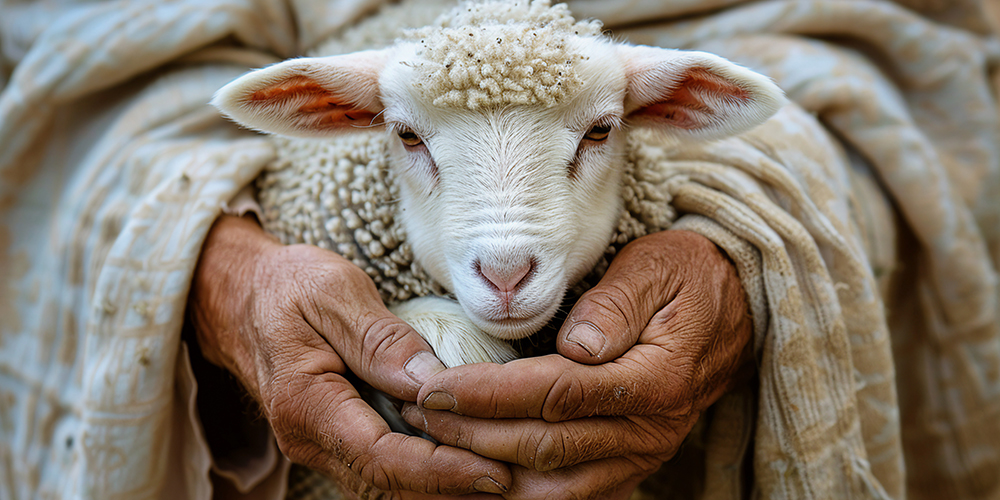Before investigating the sin offering, it is important to understand how the two non-sweet aroma offerings differ. The sin offering was demanded for the offense of sin, but the trespass offering was required for the damages of sin. The sin offering deals with the guilt of sin; Christ’s blood purges the believer’s conscience from that. The trespass offering deals with the damage that sin causes; through Christ’s offering, full restoration of the sinner to God is made possible. Thus, Christ as pictured in the sin offering resolves who we are by nature, but in the trespass offering He absolves what we have done. Both the sin offering and the trespass offering were for sins of ignorance (e.g., weakness or neglect; Lev. 4:13, 22, 27; 5:15) and for offenses against others (Lev. 6:2-5), but not for acts of defiance against God.
Accountable to God
Leviticus 5:1-4 provides four examples of such offenses: someone who negligently withheld information in a public charge against another person, accidental defilement from touching something dead, some human uncleanness (e.g., a leper), and a rash oath (e.g., a soon-forgotten vow). Leviticus 4:1 through 5:13 groups the reasons for presenting a sin offering into two classes: First, when the conscience of the offerer was violated, no specific sins are listed (Lev. 4). Second, when the offerer became ceremonially unclean per the stipulations of the Law (Lev. 5:1-13).
Leviticus 4 provides instructions for the wounded conscience. The sin offering reminded the Jews that everyone was personally accountable to God for sin. There were no Levitical sacrifices that an individual could sacrifice to the Lord to atone for willful sin (Num. 15:30). God is holy, and for Him to dwell among His people, they had to be holy too; as this was an impossibility, sin and trespass offerings were needed. At the national level, all sin was atoned for on the annual Day of Atonement (Lev. 16).
Everyone Can Be Forgiven
Instructions for this sacrifice were provided for six different people groups (Lev. 4:3-5:13): the high priest, the whole congregation, a ruler of the people, a common person, the poor, and the very poor. A young bull was the required sin offering for the first two groups, a male kid (goat) was the obligation of a ruler, a common person could offer either a female lamb or kid (goat), while the poor were permitted to offer two birds and the very poor, fine flour. All animals presented had to be without blemish.
The high priest had to officiate the offerings for himself and for the congregation, and these required him to purge the sanctuary with the blood of the young bull. Because the blood was taken into the sanctuary, eating any part of the bull sacrifice was prohibited (Lev. 6:30). Although a sinning ruler needed to bring a male kid from the goats, and common people needed a female kid or lamb for their sins, the procedure for both was identical. Portions of the kids and lambs could be eaten by the officiating priest in the courtyard of the tabernacle because the blood of these animals was not carried into the sanctuary (Lev. 6:25-29).
When any individual or the Jewish elders (who represented the entire congregation) became aware that a sin of ignorance had been committed, a sin offering was to be presented to atone for the sin and to receive Jehovah’s forgiveness. The procedure for the first four groups was similar, except for the type of animal to be presented and the application of blood within the sanctuary.
The poor could offer two turtledoves or two young pigeons, one for a sin offering, which first had to be presented by the priest, and the other for a burnt offering. If the offerer was so severely impoverished that he could not supply two birds, he could bring one tenth of an ephah of fine flour for the sin offering. The priest was then to burn a memorial of it on the altar, without oil or frankincense because it was a sin offering, to atone for sin. Although the meal offering itself did not have blood, because it was burned with the blood sacrifices, it assumed the value of a blood sacrifice for those who could not afford to offer one. This ensured that anyone wanting atonement for sin could be forgiven by God.
Ashes and Blood
The portions of the sin sacrifice, not burned on the Bronze Altar or eaten by the priests, were burnt on top of the ashes of the burnt offering located in a ceremonially clean place outside of camp (Lev. 6:11). Whether the sin offering was burnt on the altar or the ash pile, the procedure showed that the basis of its approval directly related to God’s acceptance of the burnt offerings, which pictured God’s immense appreciation of His Son’s sacrificial devotion. The portions of the lambs and kids (but not the bullocks) that were not burnt on the altar were given to the officiating priest, who had to eat the sacrifice (which was considered holy) in the courtyard of the tabernacle.
When the priests partook of the sin offerings, this portrayed the truth that the believer’s union in Christ from a positional standpoint is complete in every aspect, including the fact that we died with Him two thousand years ago (Rom. 6:6). Though Christ bore the judicial penalty of sin for us, we nonetheless experience the fellowship of His death in an ongoing way (Phil. 3:10). This truth is conveyed in eating the meat of the sin offering in the holy place.
The blood from the sweet savor offering was not sprinkled before the veil, because the burnt offering and peace offering did not purge away sin; also, the blood from these sacrifices was sprinkled on the outside of the Bronze Altar and not applied to the horns of the altar. However, the sin offering does speak of purging from sin. In this sacrifice we see Christ suffering apart from God under the judgment for our sin and doing so in the place of total rejection “outside the camp” (Heb. 13:11). Anyone desiring salvation must depart from humanized religion and identify with Christ alone, for only His shed blood when applied can remove the guilt of sin (Heb. 9:12-14).
The Great Exchange
Before the sin offering was killed the offerer placed his hands upon the head of the animal, presumably confessing his sins and symbolically transferring the offense to the animal. If the whole congregation committed an offense, then the leaders of the people put their hands on the head of the bull and confessed the sin. The sacrifice was then killed and completely burned. This indicated the sin had been fully atoned for and forgiven. The picture of the sin offering is clear; Christ identified with us by becoming a man, took our sin upon Himself at Calvary, and was judged by God in our place (Rom. 5:8; 1 Pet. 3:18).
The sin offering was completely consumed by fire and the Lord Jesus was completely consumed in the judgment for our sin. As God’s Lamb, the Lord presented Himself as an offering for sin (John 1:29). He was both the Mediator of a New Covenant (Heb. 8:7-9) and the ransom that established it (1 Tim. 2:5-6). The priest who presided over the sin offering was innocent of the offerer’s sin but yet became connected with it in order to apply the blood of the sacrifice to make atonement for the sinner. This pictures Christ as the Mediator between God and men.
Summary
While Old Testament sacrifices atoned for sin, Christ’s sacrifice was the propitiation which satisfied God’s wrath concerning all of man’s sin for all time (Rom. 3:24-26; 1 John 2:2). The innocent took the place of the condemned so that the guilty might have the opportunity to be redeemed and receive the righteous standing of the innocent. This is the great exchange pictured in the sin offering. Christ took our place in death that we might receive everlasting life in Him. Because God judged His Son for our offenses, He can righteously restore repentant sinners to Himself (2 Cor. 5:21). This is the wonderful message of the sin offering.

